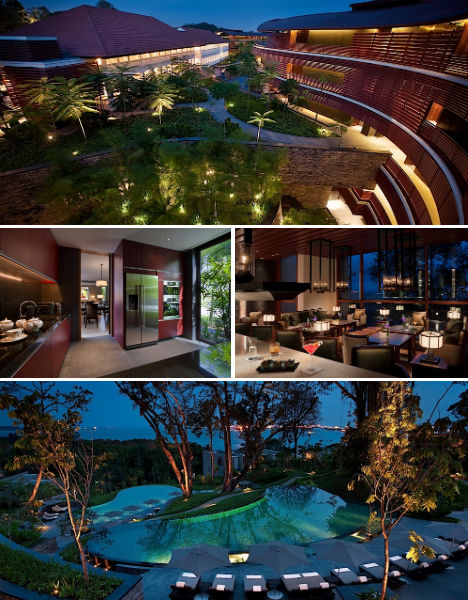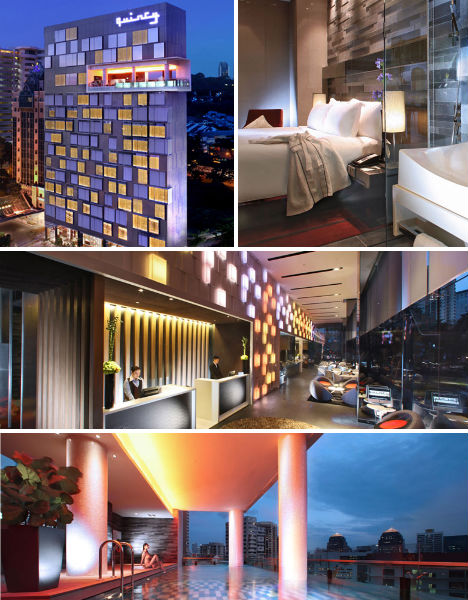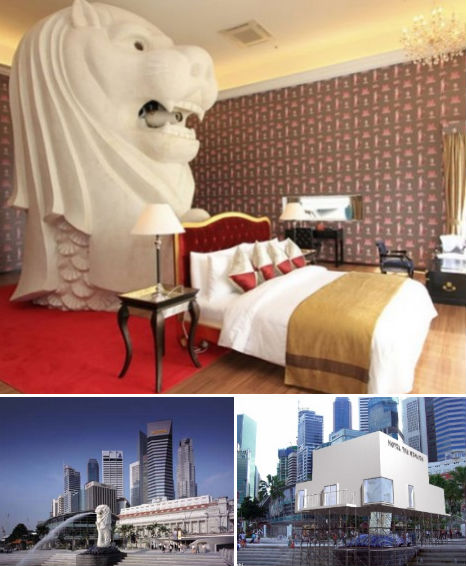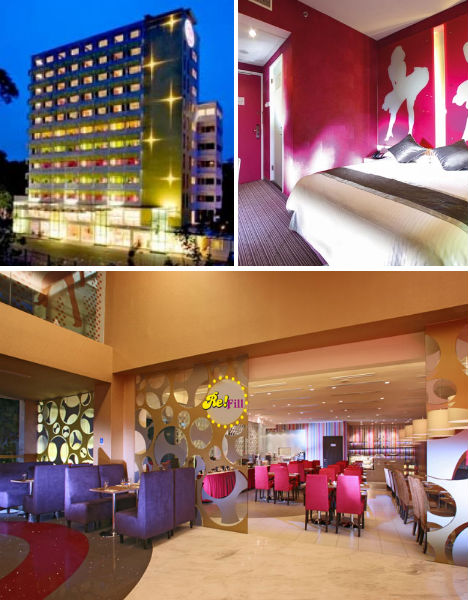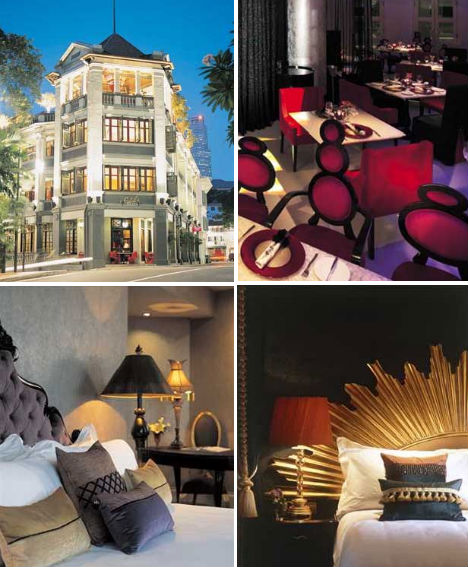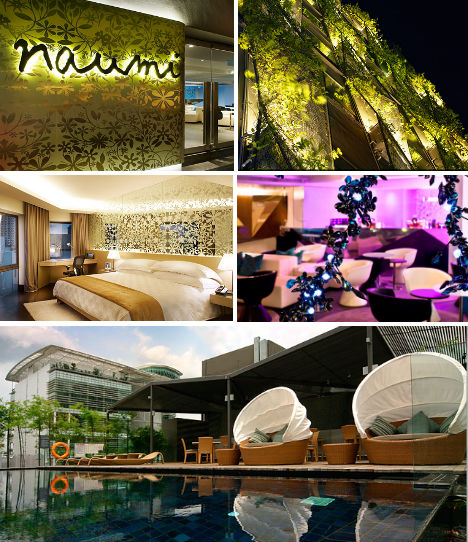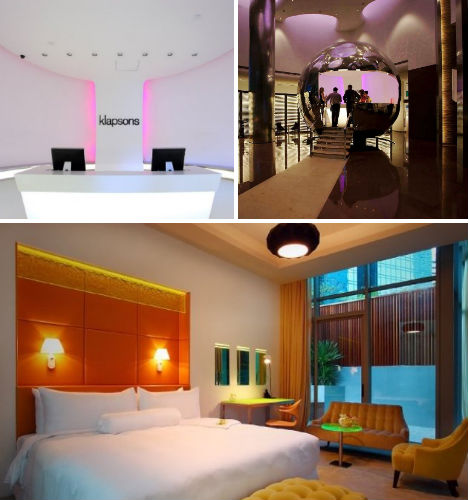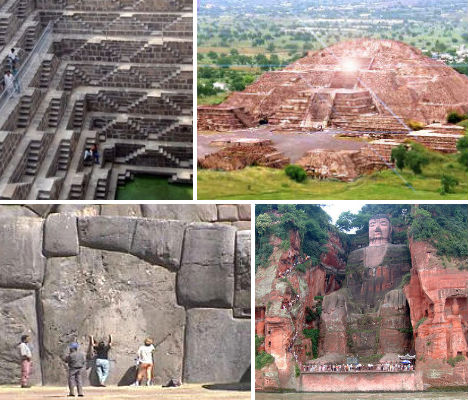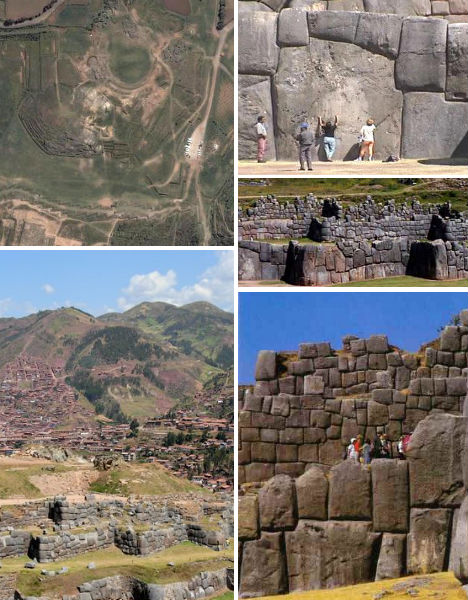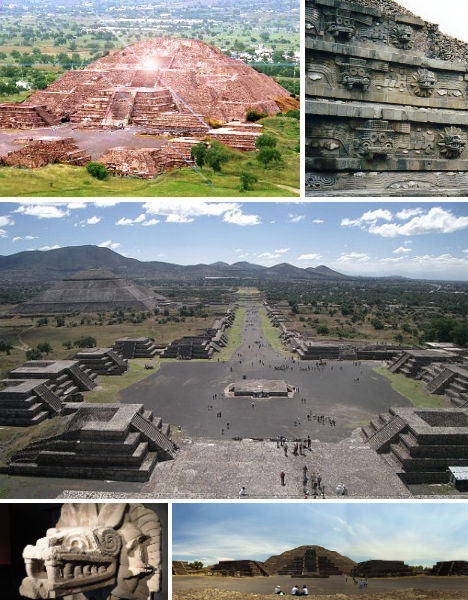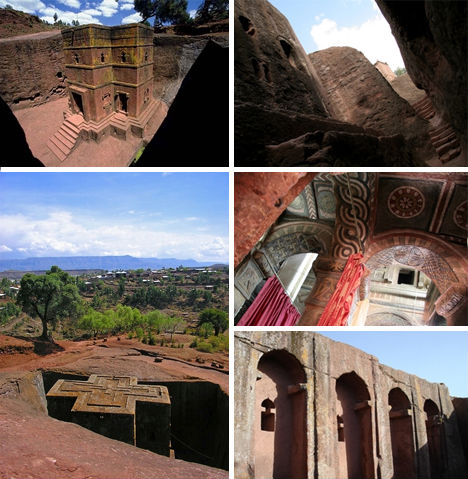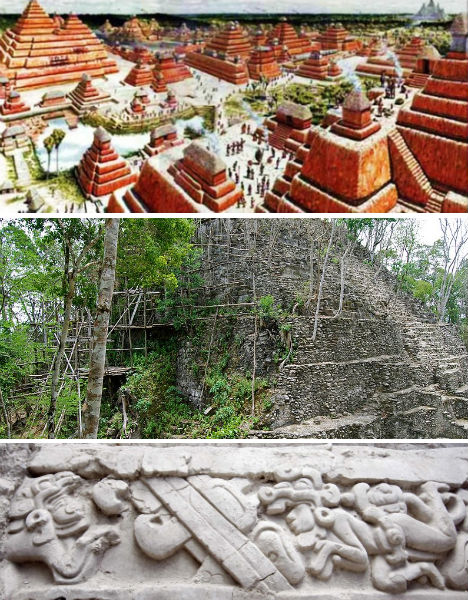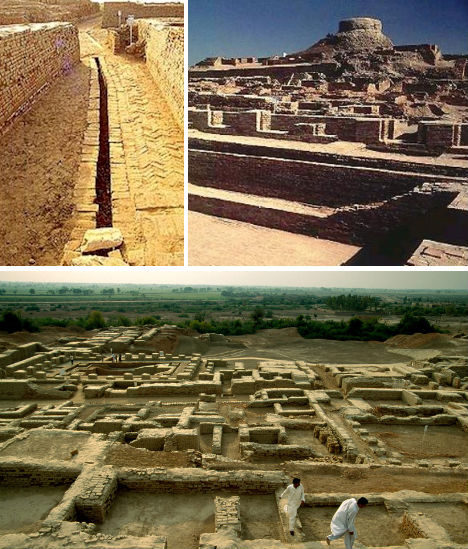The Sharing Economy: "

Thanks to the social web, you can now share anything with anyone anywhere in the world. Is this the end of hyperconsumption? | Illustration by Craig Robinson
It's 8:30 a.m. in Silicon Valley, and Neal Gorenflo is already busy sharing. Inside his Mountain View town house, just a few short blocks from the Caltrain station where commuters pour out each morning on their way to Google, Gorenflo hands over his 15-month-old son, Jake, to a nanny he shares with his neighbor. At a local coffee shop, he logs on to a peer-to-peer banking site called Lending Club to make a series of small loans to someone planning a wedding, another starting a pet business, and a guy named Pat who wants to move. After biking down to the station, he drags his ancient Peugeot onto the train to San Francisco, where he hops into a Prius he's reserved for a few hours from City CarShare, a not-for-profit version of Zipcar.
After driving out to Berkeley for a tour of a cohousing community, he finally lands at a shared office space in SoMa, from which he works once a week. 'What typically happens is when people try one sharing behavior, then they start to think, What can I do next?' says the 47-year-old ex-equities analyst. 'And those small changes ultimately lead to big changes.'
Gorenflo does, of course, still own stuff. He owns his house and his laptop and his clothes and even that old Peugeot bike (Mountain View won't get a bike-sharing program till later this year). But the self-described 'sharing hacker' has come a long way in a short time from his past existence as a corporate exec. In 2004, he was a strategist for a division of shipping giant DHL, splitting time between San Francisco and company headquarters in Brussels. The Up in the Air life was not for him -- he started noticing that most thirtysomething expats in his office were divorced, and he worried that his relationship with Andrea, his girlfriend, might be headed for trouble. 'Our mission statement at DHL was something like, 'To be the best box mover in the world,' ' recalls Gorenflo, who resembles a compact Kris Kristofferson. 'I thought, What am I doing?' One afternoon, after a jog through the parking lot of his Brussels hotel, he quit his job. Since then, Gorenflo has deconstructed every aspect of his personal and working life, 'removing all the things that don't add value and concentrating on the things that deliver value.' Andrea made the cut -- she's now his wife. But the corporate life did not. In late 2009, he started Shareable, a not-for-profit web hub that provides individuals and groups with a playbook for how to build systems for sharing everything from baby food and housing to skills and solar panels. 'Business has spent centuries making buying really easy,' says Gorenflo. 'We're just at the beginning of making sharing easy.'
Gorenflo is a leading proselytizer of a global trend to make sharing something far more economically significant than a primitive behavior taught in preschool. Spawned by a confluence of the economic crisis, environmental concerns, and the maturation of the social web, an entirely new generation of businesses is popping up. They enable the sharing of cars, clothes, couches, apartments, tools, meals, and even skills. The basic characteristic of these you-name-it sharing marketplaces is that they extract value out of the stuff we already have. Many of these sites depend on millennials disenchanted by the housing bubble and the banking crisis, or uninterested in traditional icons of success such as house or auto ownership. But the number of people who have quietly begun tapping in is impressive: Already, more than 3 million people from 235 countries have couch-surfed, while 2.2 million bike-sharing trips are taken each month. Contends Rachel Botsman, coauthor of the recently published What's Mine Is Yours: The Rise of Collaborative Consumption: 'This could be as big as the Industrial Revolution in the way we think about ownership.'
The evolution of the social web, explains Botsman, first enabled programmers to share code (Linux), then allowed people to share their lives (Facebook), and most recently encouraged creators to share their content (YouTube). 'Now we're going into the fourth phase,' says Botsman, 'where people are saying, 'I can apply the same technology to share all kinds of assets offline, from the real world.' ' The 33-year-old Brit, schooled at Oxford and Harvard, ditched her career as an innovation consultant for companies like GE and IBM. 'In marketing, we spend so much money on research and understanding the consumer psyche -- and all that investment goes into selling more stuff,' she explains. 'I just can't help companies sell more stuff.'
The central conceit of collaborative consumption is simple: Access to goods and skills is more important than ownership of them. Botsman divides this world into three neat buckets: first, product-service systems that facilitate the sharing or renting of a product (i.e., car sharing); second, redistribution markets, which enable the re-ownership of a product (i.e., Craigslist); and third, collaborative lifestyles in which assets and skills can be shared (i.e., coworking spaces). The benefits are hard to argue -- lower costs, less waste, and the creation of global communities with neighborly values.
The earliest of these marketplaces, like Freecycle and CouchSurfing, encouraged the exchange of goods among peers for free. But the latest sharing platforms are anchored in commerce. They have the potential to amass a new ecosystem of entrepreneurs, just as eBay once aggregated fragmented buyers and sellers into a global online marketplace. Gartner Group researchers estimate that the peer-to-peer financial-lending market will reach $5 billion by 2013. Frost & Sullivan projects that car-sharing revenues in North America alone will hit $3.3 billion by 2016. And Botsman says the consumer peer-to-peer rental market will become a $26 billion sector, and believes the sharing economy, in toto, is a $110 billion-plus market. "Is this purely a warm-and-fuzzy kind of thing?" says Ann Miura-Ko, a venture capitalist at Floodgate Fund who, along with partner Mike Maples (an early backer of Twitter and Digg), has invested in three sharing businesses. "It's not. As a venture capitalist, I'd never invest in something that's purely warm and fuzzy." In fact, in the past year, Google Ventures; Sequoia Capital; and Greylock Partners' Reid Hoffman, the cofounder and executive chairman of LinkedIn, have all backed "sharing" ventures. (Actually, Silicon Valley's preferred phrase is "underused asset utilization." As Howard Hartenbaum, general partner at August Capital, explains, "It's more obvious how you make money.")
Now that the sharing economy is gaining the backing of the financial community, corporations from car manufacturers to big-box retailers better start paying attention. 'This has the potential to be lethally disruptive,' says Umair Haque, an economist who recently published The New Capitalist Manifesto with Harvard Business Press. Sharing platforms won't bankrupt a company like Home Depot, says Haque, but they could eat away at its business. 'If the people formerly known as consumers begin consuming 10% less and peering 10% more, the effect on margins of traditional corporations is going to be disproportionately greater,' says Haque. 'Which means certain industries have to rewire themselves, or prepare to sink into the quicksand of the past.'
On a damp February evening in San Francisco, the founders of AirBnB -- one of the hottest startups in the sharing scene -- are reminiscing about the first strangers who slept on their apartment floor. 'We had a 38-year-old female who worked at Razorfish. And then an industrial designer from Salt Lake City who was even older. They slept on an air mattress on our kitchen floor,' says Joe Gebbia, AirBnB's hoodie-wearing head of user experience. Back in 2007, Gebbia and Brian Chesky were recent RISD graduates in need of extra cash to pay their rent. On a whim, they built a website offering attendees of a design conference a unique place to stay -- in their apartment, on those air mattresses, with a home-cooked breakfast. Says Gebbia of their houseguests, 'They broke every assumption we ever made about who would stay on an air bed at a stranger's house.' Encouraged, he and Chesky decided to try and build a business: a web platform where booking a room in a person's home anywhere in the world was as easy as booking a hotel room.
The challenge with building a marketplace is to ensure that there is both supply and demand. 'It's a chicken-and-egg problem,' says James Reinhart, cofounder of ThredUp, a venture-backed startup that helps people unload or swap children's clothing and toys -- the ultimate forced obsolescence -- by the box. An alum of Harvard Business School, Reinhart closely studied eBay, which in its early days helped create demand by making it free for anyone to list. 'You have to pick which side to subsidize,' says Reinhart. Like eBay, ThredUp started out by funding the supply -- the company bought hundreds of boxes of clothing before launch, so it could open up with inventory. ThredUp now gives users a credit every time they post a box of stuff their kids can no longer use. They can use the credit to acquire a box of goodies more in line with the current age of their children. Boxes that are unsold after two weeks are either given a fire-sale price or donated to charity. 'The worst experience,' he says, 'is having a box of children's clothes to sell and nobody who wants it.'
AirBnB, on the other hand, had to create demand. Gebbia and Chesky had no problem ginning up a marketplace when a major event occurred in a city with limited hotel space, like the 2008 Democratic National Convention in Denver. But when there was no urgency, business slowed to a trickle. As a result, Chesky and Gebbia put in a lot of time meeting AirBnB's early suppliers, spending the night at their homes, and organizing user meetups. They learned that people weren't willing to pay for a room they couldn't see, so Chesky and Gebbia insisted on beautiful wide-angle high-resolution photos. Early on, they placed an artificial cap on price, but they experimented with lifting it -- suddenly, hosts began renting out entire apartments, and the experiment became the norm. 'Today, if you add up all of our listings in New York City, it's probably safe to say we're 10 times larger than any hotel,' says CEO Chesky. 'We're on almost every single block in the city.'
AirBnB is now in more than 8,000 cities, and rents houses, castles, cars, yachts -- even igloos. 'I knew within three minutes I would be very interested,' says Greylock's Hoffman, who invested $7.1 million in AirBnB last April, several months after Sequoia Capital led a seed round. AirBnB -- growing at a staggering 45% average rate, month over month -- sees travel as but a first step. 'If you look at it as the eBay for space,' says Hoffman, 'people have a massive amount of liquidity and economic value tied up in their space. The ability to parse that in different ways ... the sky's the limit.' Unlike VRBO, which is limited to renting second homes, the future of AirBnB is not only in monetizing the houses, say the founders, but in monetizing all the stuff in houses, front yards, backyards, and driveways. 'I only invest,' says Hoffman, 'when I think a company will be a multibillion-dollar company.'
This is why sharing startups have piqued the attention of Sand Hill Road. 'It has the potential to be really disruptive. Amazon came first, then eBay, and peer-to-peer is next. It's almost as far as you can get on the spectrum of goods exchanged,' says Josh Felser, an investor at Freestyle Capital. In January, Craig Shapiro, former president of Good Worldwide, left the media company to start Collaborative Fund, a venture fund that will invest mostly in collaborative-consumption businesses. 'I'm looking at virtually every resource and finding ways to extract additional value or productivity from it, from food to gardens to skill sharing,' says Shapiro, whose investors include YouTube cofounder Chad Hurley, MIT Media Lab cocreator Nicholas Negroponte, and even Botsman.
Not every category is a natural for sharing. 'Expensive electronics wouldn't work,' says Punsri Abeywickrema, a former LinkedIn software engineer who founded an online rental company called Rentalic in 2008. Abeywickrema built the platform as a marketplace for rentals of everything from handbags to lawn mowers. But after nine months of user testing, he concluded that shareable objects had to fit specific criteria: They must cost more than $100 but less than $500, be easily transportable, and be infrequently used. As a result of his research, Abeywickrema has narrowed the site's scope to sporting goods and outdoor gear.
The challenge that worries everyone in the sharing world, of course, is trust. It's one thing to believe that a knitter on Etsy will mail you that crocheted beret. It's another to let a stranger sleep in your home or borrow your second-most-expensive asset, your car. 'Sharing of the kind we're talking about really only works when there's reputation involved,' says Freestyle's Felser. 'We haven't seen any mass-market approach to combining distributed trust and sharing.' Most sharing platforms try to combat this issue by building a self-policing community. Almost all (including AirBnB) require profiles for both parties and feature a community ratings system.
But these ratings would carry far more weight if they traveled with you across the web, so that your eBay reputation helped inform your standing on AirBnB. Startups like TrustCloud would like to become the portable reputation system for the web. The company is building an algorithm to collect (if you choose to opt in) your online 'data exhaust' -- the trail you leave as you engage with others on Facebook, LinkedIn, Twitter, commentary-filled sites like TripAdvisor, and beyond -- and calculate your reliability, consistency, and responsiveness. The result would be a contextual badge you'd carry to any website, a trust rating similar to the credit rating you have in the offline world. 'Sure, there's always the argument that anyone can be an ax murderer,' concedes TrustCloud cofounder Xin Chung. 'But you get a lot more indicators in data exhaust than you do in walking up to somebody in khakis and a crisp white shirt on the street. I'd pick the data exhaust any day.'
Of course, there is one company that is already collecting a ton of that data exhaust on its own site: Facebook. 'Think of sites like Yelp and eBay,' says Carl Sjogreen, manager of Facebook's platform product team. 'They invested a ton of resources for building a notion of reputation online, but all based on pseudonyms, like joebob77 on eBay. We decided early on to be a social-networking site based on your real identity with your real name.' With more than 600 million registered users, 250 million people engaging with Facebook on external websites every month, and social plug-ins that are creeping into an estimated 10,000 new websites a day, Facebook has the potential to become the arbiter of online trust. 'The incentive to be a good player in that ecosystem goes up dramatically when it's associated with my real identity,' says Sjogreen, 'because if someone leaves a bad review of me on AirBnB, that will carry with me to the rest of the web.'
Last February, on the evening before the North American International Auto Show, in Detroit, Lisa Gansky gave a TEDx talk to an audience of some 300 people in the Fisher Theatre, including designers from brands such as Ford and Lincoln. She asked the crowd what percentage of time the average person uses his car. While a couple of folks mumbled a guess, no one was prepared for the statistic Gansky had at hand. 'Across the U.S., Canada, and Western Europe, it's 8%,' she said. 'Which means that over 90% of the time, this thing that costs us a lot of money is just sitting around.'
Gansky had been invited to explain 'the mesh,' a concept she coined in her book by the same name, which was published last September (as was Botsman's). Both authors believe the development of this mesh of shared things will affect not only the way we consume but also the way successful companies will be built. Gansky, a tech entrepreneur who made tens of millions of dollars selling startups to AOL and Kodak, thinks this means that the car companies must start behaving like a platform. 'It would be really great,' Gansky told her audience, 'if any moment now, you guys could start rolling share-ready cars off the assembly line.'
Cars are the ultimate expensive underutilized commodity. Eleven years ago, Zipcar started convincing urbanites that they could shun car ownership and enjoy the perks of access without any expense or inconvenience. Zipcar is now getting ready for its IPO. But a slew of new venture-backed car-sharing and ride-sharing startups have recently emerged, and their business model might be more efficient than Zipcar's. Zipcar, which has yet to turn a profit, is saddled by the expansion and maintenance of its fleet, a cost that now clocks in at more than $90 million. Platforms like RelayRides, Zimride, Spride, and Getaround don't own any cars -- they simply enable the sharing of autos owned by individuals.
The economic incentive to share your second-most-valuable asset with a stranger may be compelling. 'The average person using RelayRides makes $250 a month renting,' says Shelby Clark, founder of RelayRides, which is backed by August Capital and Google Ventures. 'Some users are making enough on RelayRides that it's offsetting their entire car payment. They're basically getting a free car.' And since RelayRides has a $1 million insurance policy covering both sides during each reservation, it's low risk.
And then there are the noneconomic benefits. Clark says that when people's mobility costs shift from being fixed (ownership) to variable (renting), they make more efficient decisions about when they actually need to drive. 'Studies have shown,' says Clark, 'that the average car sharer drives 40% less than the average owner.' Shareable's Gorenflo believes this makes car sharing the 'gateway drug' to other types of sharing. 'Historically, cars were the vehicle into hyperconsumption,' says Gorenflo. 'It looks like they could be the vehicle out of it too.'
Car manufacturers are starting to pay attention. In early 2010, Peugeot rolled out a mobility rental service called Mu. A membership gives people access to not only customizable Peugeot cars (fitted with bike racks, snow tires, and TVs) but also to electric scooters and bikes. 'In the biggest cities in Europe, we see people giving up ownership of the car to switch to sheer usage,' says Peugeot's Nadège Faul. By the end of 2011, Mu will expand from six cities to 70. 'We are convinced it's a new age of car manufacturing,' she says. 'Either we take care of it and recognize this new market or we might just as well lose these consumers for good.'
German car manufacturer Daimler is taking this new reality even more seriously. Its Car2Go service is similar to Zipcar's, except that it doesn't require a reservation or a two-way trip. Car2Go's mobile app allows a person walking down the street in Ulm, Germany, or Austin (its two pilot cities), to locate a Smart car on that block, access it immediately via a windshield card reader and PIN number, drive it anywhere locally, and leave it there for someone else to use. The fuel-efficient Smart car has a 100-watt solar roof, which powers the car's telematics and its battery. "According to a Frost & Sullivan study from 2010," says Car2Go managing director Robert Henrich, "the revenue in the car-sharing market will soon be in the billions. This is the order of magnitude we are looking at." Henrich will begin commercializing Car2Go this year, with plans to expand to 100 cities in the U.S. and Europe.
Daimler is investing so much in this market that it has started developing apps that work for any car -- not just a Daimler-made vehicle. Last September, Daimler's innovation group in Germany started piloting Car2Gether, which offers an app to match local drivers with people looking for a ride. Riders submit a request to a driver -- who can be driving any kind of car, not just a Daimler -- and both profiles are linked to their Facebook pages and Twitter feeds. After the ride, both driver and passenger rate each other. 'We want to make this a social network on wheels,' says Michael Kuhn, project manager of Car2Gether, who doesn't even know if Daimler will -- or can -- commercialize the service. 'It's all about access trumps ownership,' says Kuhn, sounding far more Silicon Valley than Stuttgart, Germany.
The carmaker realizes that sharing systems are going to be created whether it joins the party or not. 'If you don't build a value cycle,' says economist Haque, 'one will be self-organized. And it will commoditize you.' Whether it's moms opting to buy baby clothes from other moms through ThredUp rather than visiting Baby Gap, or neighbors borrowing a drill through NeighborGoods instead of going to Target, consumers -- or, perhaps more appropriately, citizens -- are being connected in a way that cuts out the corporate middleman. 'We often think about this stuff purely as secondary markets,' says Haque, 'but I think there's a deeper truth here, which is we're learning we don't have to obey these industrial rules of producer versus consumer. We can take the stuff we have and cycle it.'
The sharing economy is at one of those interesting junctures where no one knows how big it might get or how many industries and companies it might affect. Best Buy and Lowe's, to cite two relatively unlikely candidates, have started to contemplate how it might impact retail. 'I would say this notion of sharing is something we've been talking about in the last 12 months,' says Lowe's VP of new business development Jay Rebello. 'Social networking is impacting the definition of what a community is, and, in the past, people wanted to accumulate more stuff. More recently, we're seeing people view that differently.' And in sectors like banking, where Wall Street's behavior has led to immense consumer distrust, disintermediation via sharing is becoming a reality. 'We benefited enormously from the banking crisis,' says Giles Andres, CEO of Zopa, one of the several peer-to-peer lending sites, like Lending Club, that have emerged over the past several years. 'That was the catalyst for going from early adopters to a more mass-market crowd.'
'I think P-to-P banking is going to be hugely disruptive to the banking industry,' says Haque. He may be right. Still, it's hard to envision a big peer-to-peer market in $1 million mortgages, for example. As he himself says, 'The finance guys are proficient on maintaining their stranglehold on the status quo, trying to convince us that without them we'll fall apart.' But Haque's faith is based on the principle that's at the very heart of the new sharing economy: the resilience of distributed systems. He offers as parable the way that villages and communities survived the Irish banking crisis of the late '70s, during which bankers -- yes, bankers -- went on strike. They warned the public that the economy would collapse without a banking system. 'What happened instead,' says Haque, 'was a P-to-P banking system emerged out of nowhere. The local pubs became the de facto banks, lending money to their customers. If you think about it, who is a better judge of character in Ireland than the bartender?'
He laughs. 'The economy did not stop growing -- it didn't even falter.'
A version of this article appears in the May 2011 issue of Fast Company.



"
 If anyone reads books, it’s probably you guys. But according to some recently-gathered (and frankly startling) statistics, you’re a dying breed. To wit:
If anyone reads books, it’s probably you guys. But according to some recently-gathered (and frankly startling) statistics, you’re a dying breed. To wit:






